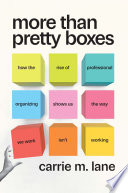

Packaging is not merely a protective layer for products; it serves as a crucial component of brand identity. The book emphasizes that packaging communicates a brand's values, personality, and quality. It acts as the first point of interaction between the consumer and the product, influencing perceptions and purchase decisions. A well-designed package can evoke emotions, tell a story, and create a memorable experience. The author discusses how brands that invest in thoughtful packaging can differentiate themselves in a crowded market, making it essential for entrepreneurs and marketers to understand this aspect deeply.
Continue readingWith increasing consumer awareness about environmental issues, sustainability in packaging has become a focal point for brands. The book highlights the importance of using eco-friendly materials and reducing waste. It discusses various sustainable packaging options and how brands can implement them without compromising on aesthetics or functionality. The author argues that sustainability is not just a trend but a necessity for future-proofing a brand. Companies that embrace sustainable practices can build stronger connections with consumers who prioritize environmental responsibility.
Continue readingPackaging design goes beyond aesthetics; it taps into consumer psychology. The book explores how colors, shapes, and typography can influence buying behavior. For instance, certain colors can evoke specific emotions or associations, while unique shapes can make a product stand out on the shelf. The author provides insights into how brands can leverage psychological principles in their packaging strategies to enhance appeal and drive sales. This understanding can help marketers create designs that resonate with their target audience, ultimately leading to increased brand loyalty.
Continue readingThe book delves into the advancements in packaging technology and how they have transformed the industry. From smart packaging that interacts with consumers to innovations in materials that extend shelf life, the author discusses various technological breakthroughs. These advancements not only improve functionality but also enhance the consumer experience. Understanding these technologies allows brands to stay ahead of the curve and adopt practices that can lead to operational efficiencies and better customer engagement.
Continue readingStorytelling is a powerful tool in marketing, and packaging provides a unique canvas for brands to tell their stories. The book emphasizes how brands can use packaging to convey their narratives, values, and mission. By incorporating storytelling elements into their designs, brands can create emotional connections with consumers. The author shares examples of successful brands that have effectively utilized storytelling in their packaging, illustrating how this approach can enhance brand loyalty and customer engagement.
Continue readingUser experience (UX) is often associated with digital products, but it is equally important in packaging design. The book discusses how brands can create packaging that is not only visually appealing but also functional and user-friendly. This includes considerations such as ease of opening, reusability, and convenience. By prioritizing user experience, brands can enhance customer satisfaction and reduce frustration, leading to repeat purchases and positive word-of-mouth.
Continue readingThe book concludes with a discussion on how brands can measure the effectiveness of their packaging strategies on sales performance. The author emphasizes the importance of metrics and analytics in understanding consumer behavior and preferences. By tracking sales data and conducting consumer research, brands can gain insights into how packaging influences purchasing decisions. This information is invaluable for refining packaging strategies and ensuring they align with consumer expectations and market trends.
Continue reading